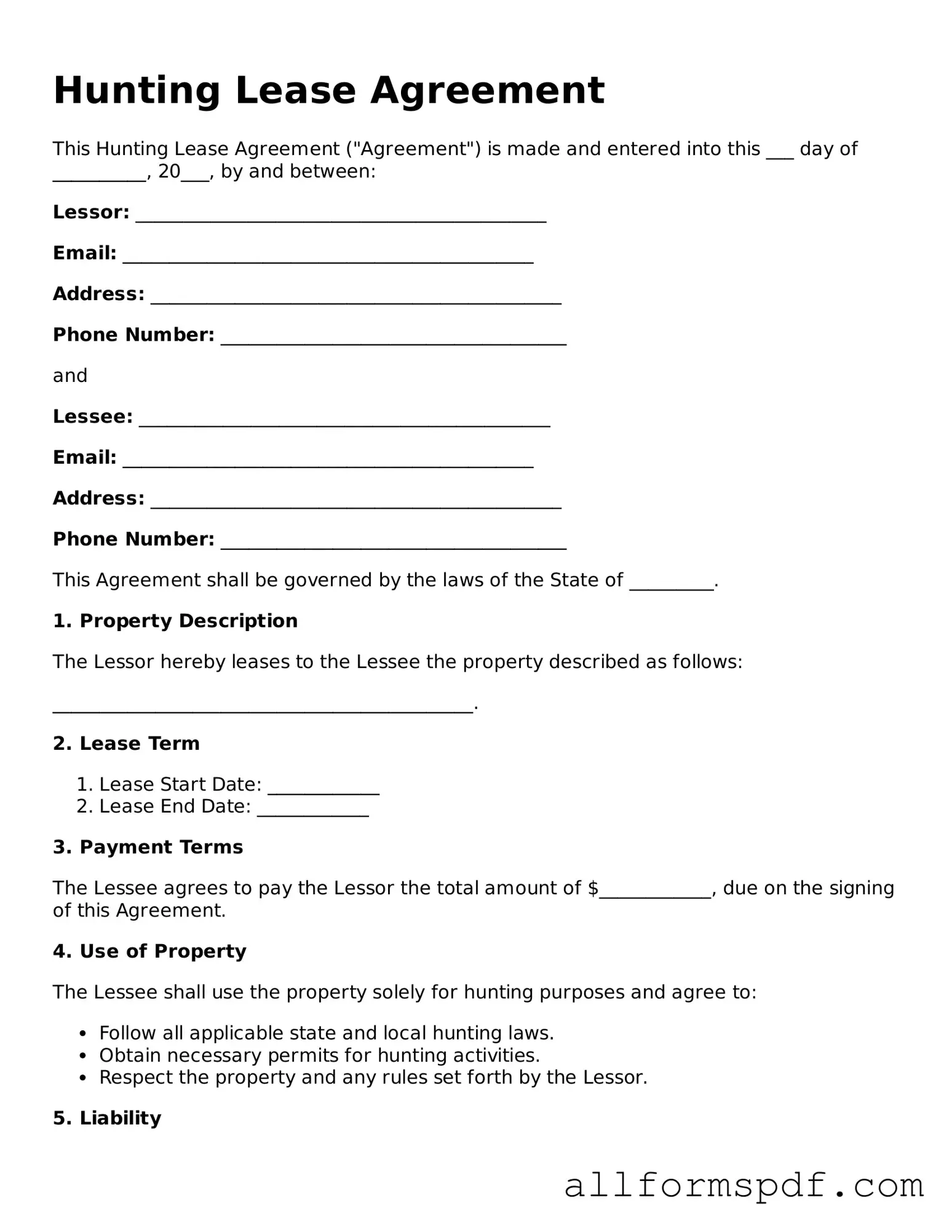Filling out a Hunting Lease Agreement form can be a straightforward process, but many people make common mistakes that can lead to confusion or even legal issues down the line. Understanding these pitfalls is crucial for both landowners and hunters. Here are nine mistakes to watch out for.
First, one of the most frequent errors is failing to include all necessary details. It’s essential to provide complete information about the property, including boundaries and any specific areas that are off-limits. Omitting these details can lead to misunderstandings later on.
Another common mistake is not specifying the duration of the lease. Clearly stating the start and end dates is vital. A vague timeline can create uncertainty and disputes between the parties involved.
Many individuals also neglect to define the hunting rights granted. It’s important to specify what types of game can be hunted and whether any restrictions apply. This clarity helps prevent conflicts and ensures that everyone is on the same page.
Additionally, some people forget to address liability issues. Including a clause about liability can protect both the landowner and the hunter in case of accidents. Ignoring this aspect can expose both parties to unnecessary risk.
Another mistake is not discussing payment terms. Clearly outlining how much the lease costs and when payments are due can prevent financial disputes. Both parties should agree on the payment method as well.
Moreover, failing to include rules and regulations specific to the property can lead to issues. These rules should cover safety protocols, hunting methods, and any local laws that must be followed. Clear guidelines help maintain a safe and respectful environment.
Some individuals may overlook the importance of signatures and dates. Both parties must sign the agreement and include the date of signing. Without proper signatures, the document may not be legally binding.
Another oversight is not keeping a copy of the signed agreement. After everything is filled out and signed, it’s crucial to keep a copy for future reference. Having documentation can be invaluable if disputes arise later.
Finally, many people fail to consult legal advice when necessary. While it might seem tempting to fill out the form on your own, seeking professional guidance can help avoid costly mistakes. A little extra effort can save a lot of trouble in the long run.
By being aware of these common mistakes, both landowners and hunters can ensure that their Hunting Lease Agreement is clear, effective, and legally sound. Taking the time to fill out the form correctly is an investment in a smooth and enjoyable hunting experience.
